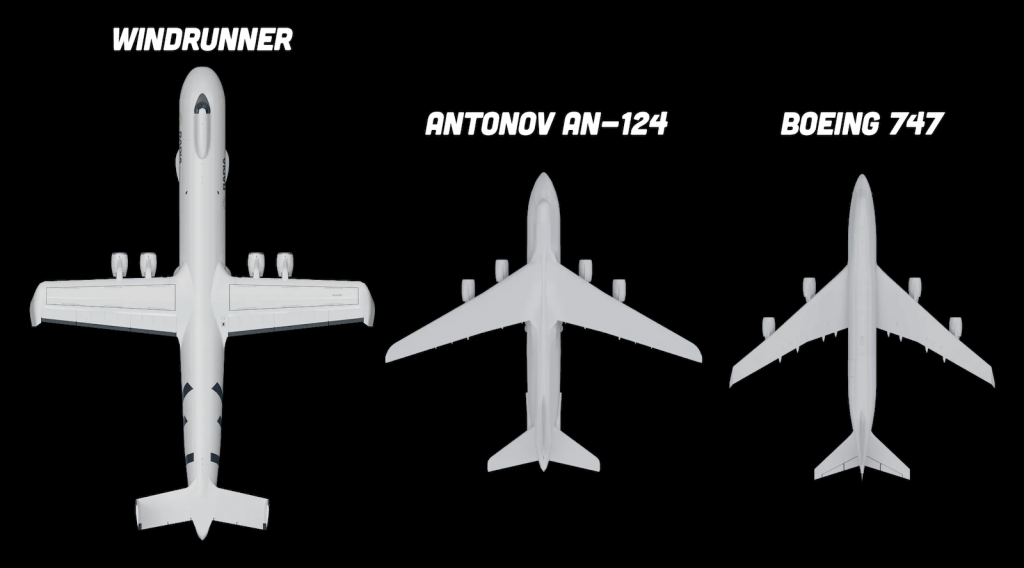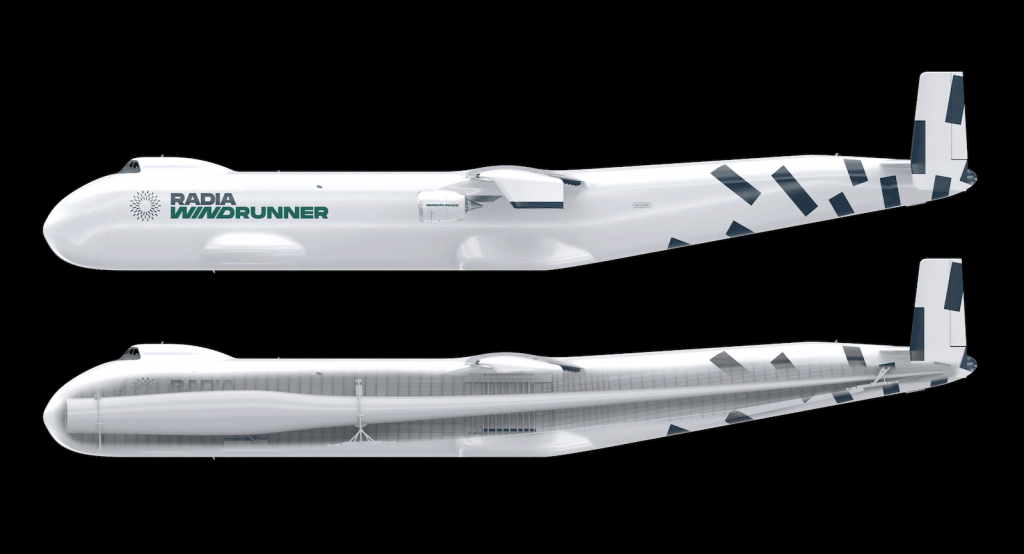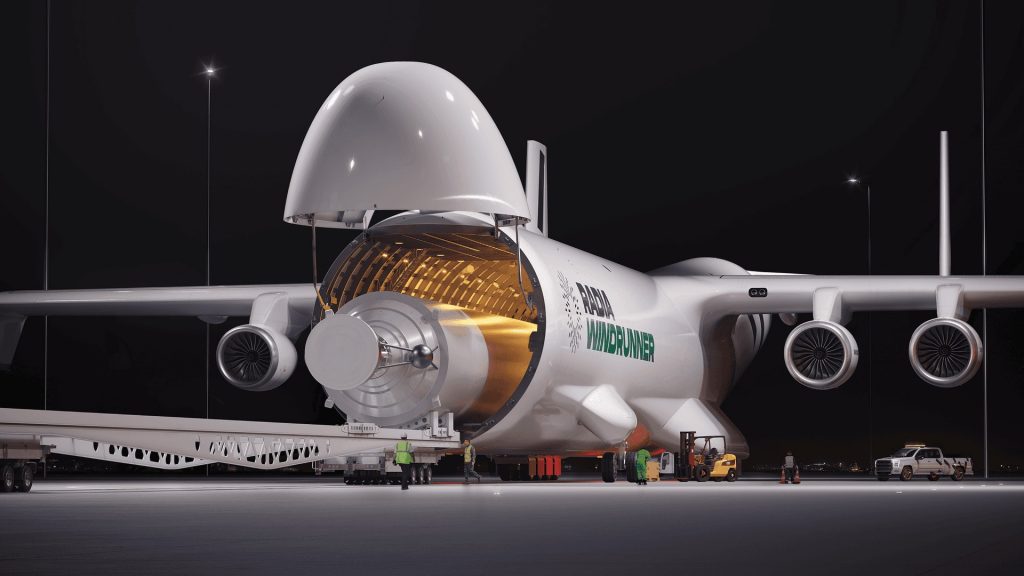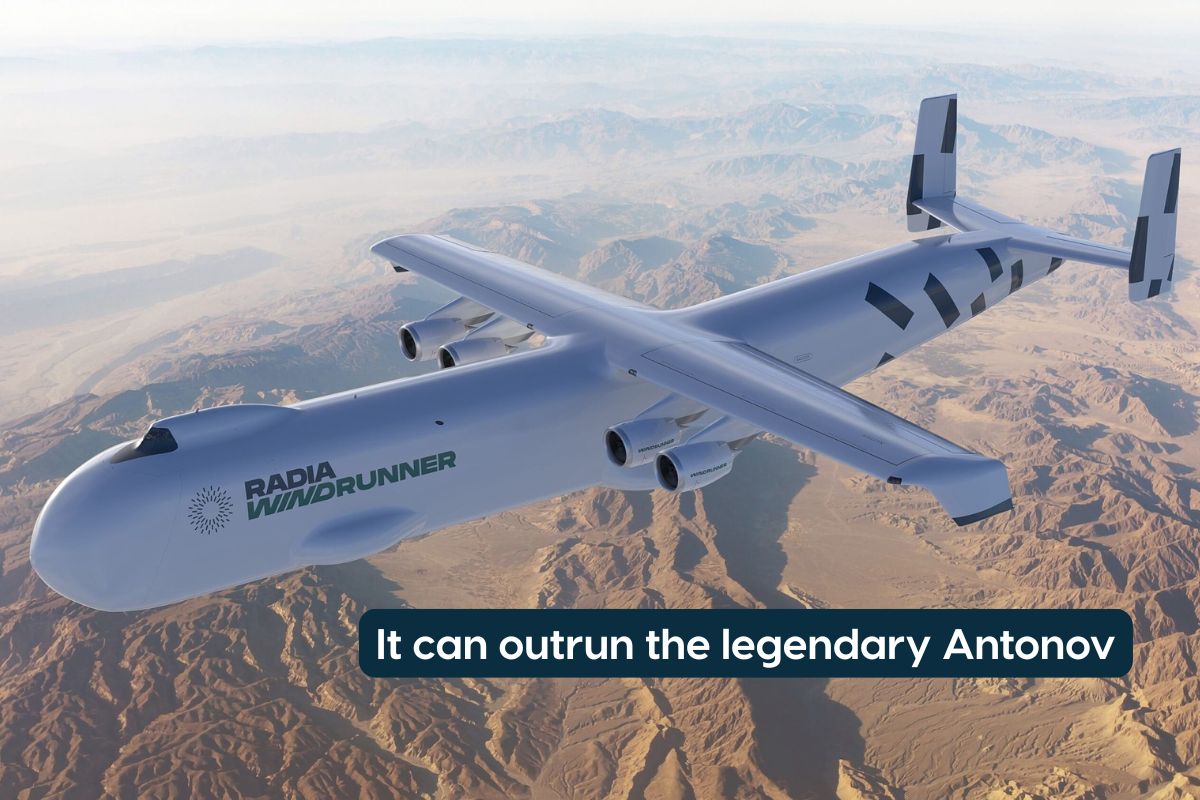The uncrowned king of cargo planes was the Ukrainian Antonov An-225 Mriya, until its only airworthy example was lost in the war. An American startup is developing an even bigger air whale only to serve a specific segment of air transport.
For a decade, a US company called Radia has been developing a giant transport aircraft capable of swallowing one of the largest wind turbine blades, 100 metres long, according to a presentation by news portal The Autopian. This aerial elephant would be even bigger than the former king of cargo aviation, the Antonov An-225 Mriya.
Sadly, the world is now missing this oddity of air transport industry. The only one Antonov An-225 capable of taking to the skies was destroyed at the very start of the Russian-Ukrainian war that broke out in 2022. The six-engine plane has fascinated aircraft enthusiasts and young boys every place she appeared. The aircraft has visited many places because many customers have taken advantage of its extraordinary cargo carrying capacity.
The Antonov company promises to rebuild the Mriya, but if it does, it will probably no longer be the world’s largest aircraft. According to the plans Radia’s WindRunner i s going to be the largest. Looking at the data of the aircraft plans, The Autopian believes it could be a crazy-looking aircraft, which is indeed huge, but for that reason it is not sure that this enormous flying whale is ever going to be put into production.

Most of the biggest mules in the air are Boeing’s classic aircraft
The Scaled Composites 351 Stratolaunch, a twin-engined, six-engine elephant, fits into the ranks of giant airplanes. It is slightly shorter at 72.5 metres in length than the air transport classic, the Boeing 747-800F, but with a wingspan of more than 117 metres, it is the world’s largest aircraft by that comparison.
This aircraft is used exclusively to carry rocket-powered aircraft between its two fuselages at an altitude of 11 kilometres. An other airborne whale is the Boeing 747-400 Large Cargo Freighter (Dreamlifter), a fuselage-lifted aircraft based on the 747 Jumbo. The largest planes in daily use are still the old Jumbos, often converted from passenger to cargo aircraft.
The idea for the WindRunner was born in the mind of an entrepreneur aeronautical engineer Mark Lundstrom in 2016. At the time, companies building wind turbines were complaining that while they could install wind turbines with 100-metre blades at sea, they couldn’t do so on land because it was impossible to transport something that long from its manufacturing site to its place of use.
Lundstrom thought there was nothing better suited to this than a sufficiently long aircraft that could land on poor ground with a short runway. He founded Radia to make this dream a reality.

Maths tells us that unfortunately we won’t see WindRunner at Airport BUD
The WindRunner will only have four engines. It will have a range of 1900 kilometres, a maximum altitude of 12 kilometres and a top speed of 700 kilometres per hour. The pilots will sit above the cargo hold, as is usual for 747s. The biggest attraction will be the aircraft’s cargo area, which will be 104 metres. Its height and width are planned at seven to seven metres.
Its transport capacity will be 7,700 cubic metres in volume and 72.5 tonnes in weight. This tells us that the machine is specifically designed to transport wind turbine blades. A Boeing 747-800F has a transport capacity of almost 134 tonnes, while the Antonov-225 had a staggering 250 tonnes.
Of course, nothing that is innovative escapes the attention of the US military. And so the WindRunner has not been overlooked, too. They see it as a way of transporting fighter aircraft. The more prosaic aim of the Raida is to create a smaller fleet. There would be so much demand for the transport of turbine blades that one aircraft would be too few to meet market demand.

